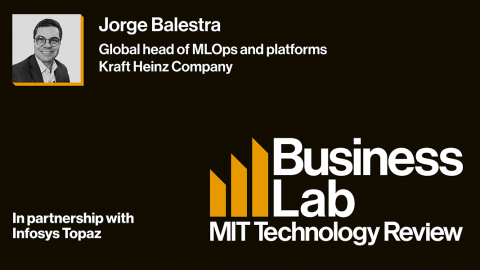
IBM reveals that nearly half of the challenges related to AI adoption focus on data complexity (24%) and difficulty integrating and scaling projects (24%). While it may be expedient for marketers to “slap a GPT suffix on it and call it AI,” businesses striving to truly implement and incorporate AI and ML face a two-headed challenge: first, it’s difficult and expensive, and second, because it’s difficult and expensive, it’s hard to come by the “sandboxes” that are necessary to enable experimentation and prove “green shoots” of value that would warrant further investment. In short, AI and ML are inaccessible.
Data, data, everywhere
History shows that most business shifts at first seem difficult and expensive. However, spending time and resources on these efforts has paid off for the innovators. Businesses identify new assets, and use new processes to achieve new goals—sometimes lofty, unexpected ones. The asset at the focus of the AI craze is data.
The world is exploding with data. According to a 2020 report by Seagate and IDC, during the next two years, enterprise data is projected to increase at a 42.2% annual growth rate. And yet, only 32% of that data is currently being put to work.
Effective data management—storing, labeling, cataloging, securing, connecting, and making queryable—has no shortage of challenges. Once those challenges are overcome, businesses will need to identify users not only technically proficient enough to access and leverage that data, but also able to do so in a comprehensive manner.
Businesses today find themselves tasking garden-variety analysts with targeted, hypothesis-driven work. The shorthand is encapsulated in a common refrain: “I usually have analysts pull down a subset of the data and run pivot tables on it.”
To avoid tunnel vision and use data more comprehensively, this hypothesis-driven analysis is supplemented with business intelligence (BI), where data at scale is finessed into reports, dashboards, and visualizations. But even then, the dizzying scale of charts and graphs requires the person reviewing them to have a strong sense of what matters and what to look for—again, to be hypothesis-driven—in order to make sense of the world. Human beings simply cannot otherwise handle the cognitive overload.
The moment is opportune for AI and ML. Ideally, that would mean plentiful teams of data scientists, data engineers, and ML engineers that can deliver such solutions, at a price that folds neatly into IT budgets. Also ideally, businesses are ready with the right amount of technology; GPUs, compute, and orchestration infrastructure to build and deploy AI and ML solutions at scale. But much like the business revolutions of days past, this isn’t the case.
Inaccessible solutions
The marketplace is offering a proliferation of solutions based on two approaches: adding even more intelligence and insights to existing BI tools; and making it increasingly easier to develop and deploy ML solutions, in the growing field of ML operations, or MLOps.







Recent Comments